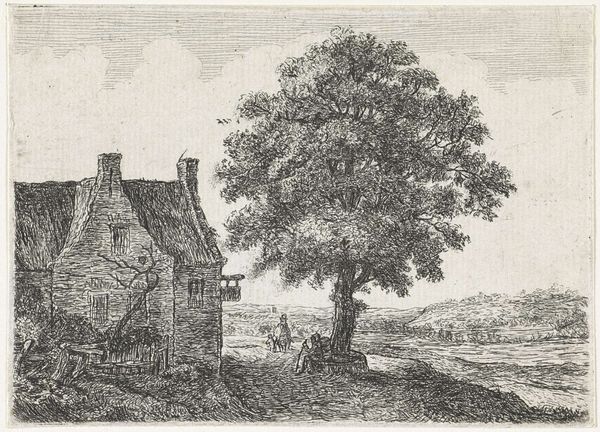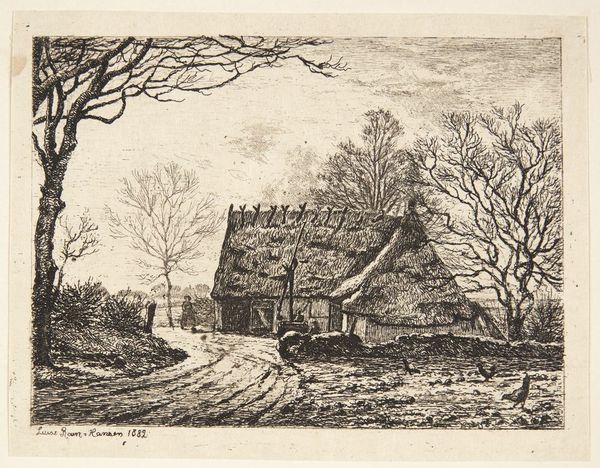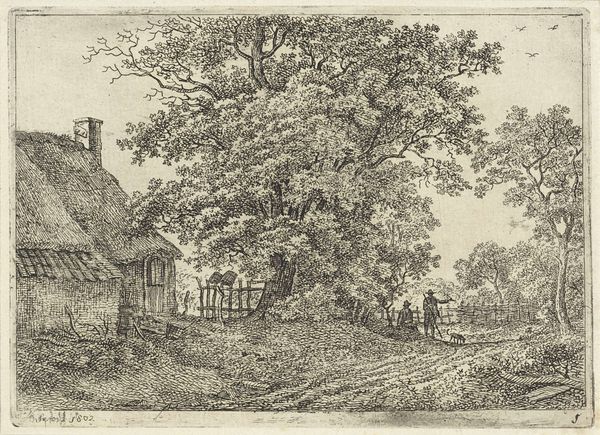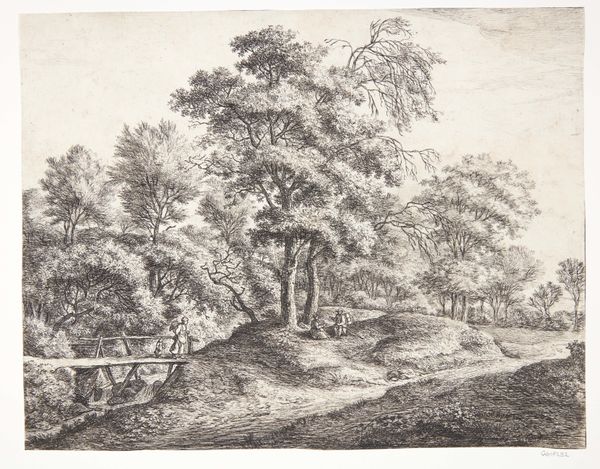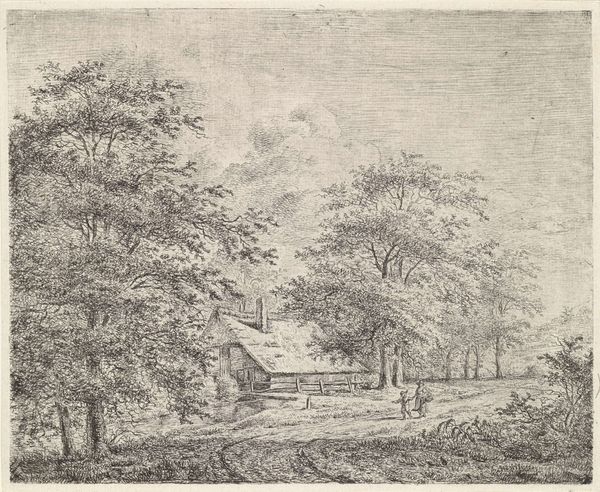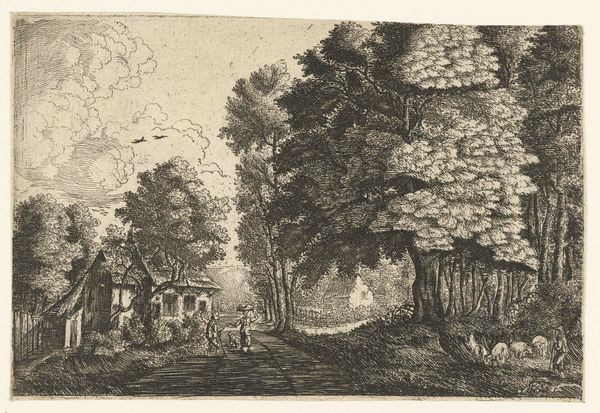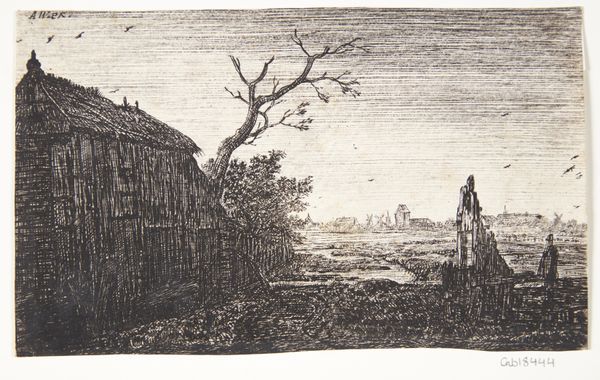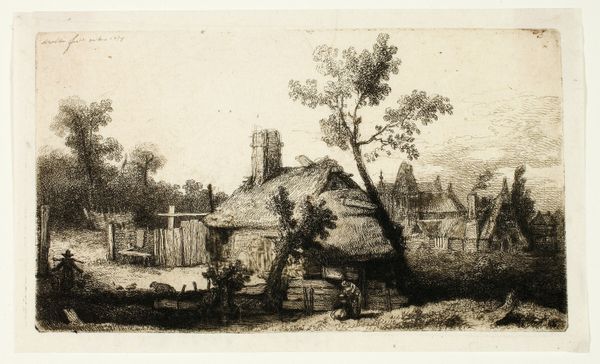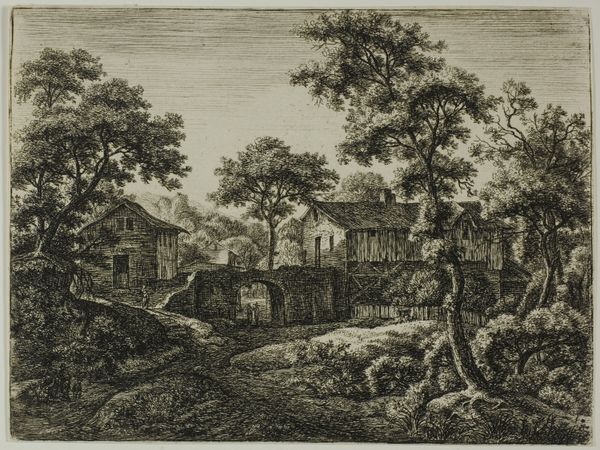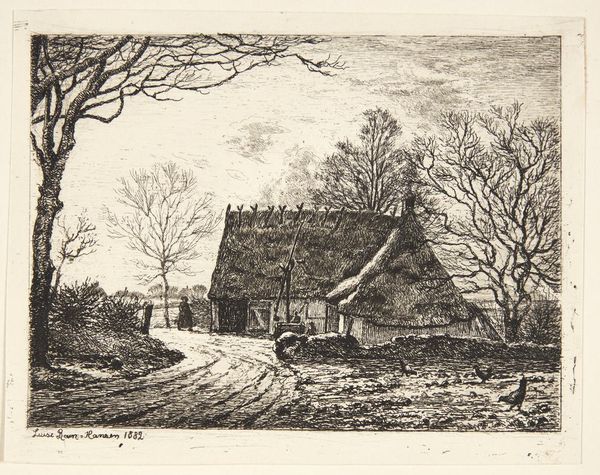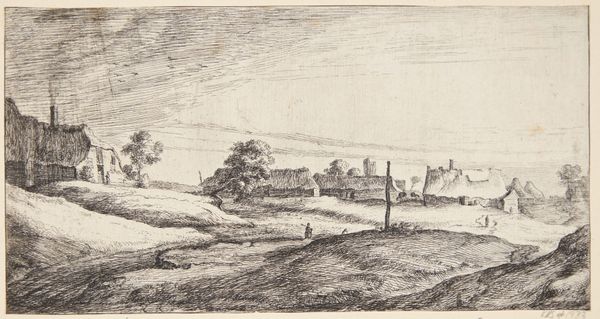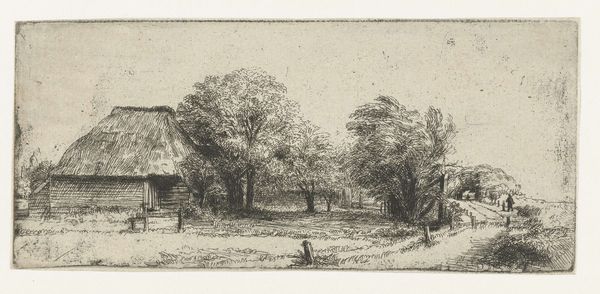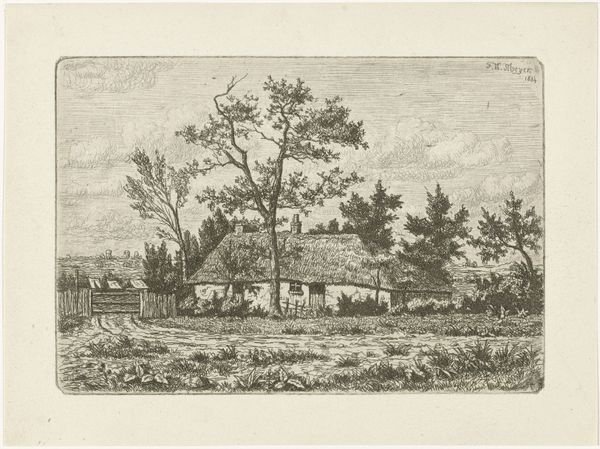
print, etching
#
dutch-golden-age
# print
#
etching
#
landscape
#
realism
Dimensions: 105 mm (height) x 135 mm (width) (bladmaal)
Curator: What strikes me first about this print, "Hus i måneskin", which translates to "House in Moonlight," is its quiet melancholy. It feels almost like a fading memory, wouldn't you agree? Editor: Absolutely. There's a stark beauty to the etching's monochrome palette, a deep nostalgia for rural life that probably contrasts rather sharply with 17th-century Dutch urban realities. The stark light does suggest a yearning, perhaps for something simpler. Curator: Jan Ruyscher made this piece sometime between 1625 and 1675, using the etching technique, as we can see. The composition, featuring a humble house nestled under a towering tree, feels deeply symbolic to me. The house represents shelter and domesticity, of course, and that old tree with such wide arms signifies resilience and endurance through time. Editor: And perhaps access, or a barrier, depending on how you read the relationship between the house and nature. Considering the time, do you think the Dutch Golden Age impacted landscape traditions in ways we haven’t fully unpacked? One can see an uneasy hierarchy in how the etching is configured: Humans live *in* nature, which raises lots of questions about ecological exploitation or anxiety, however you choose to parse it. Curator: A brilliant point! I see the symbolic framework through which land is experienced is much bigger than just bucolic representations of farms and pastures. Even Ruyscher's realism still emphasizes deeper, sometimes invisible networks, especially regarding property. Even just from how the artist used shading to show this contrast between civilization and the rest of nature, that feels heavy. Editor: Precisely. There’s a tension. This tiny scene presents a clash between romanticizing and instrumentalizing. That dark structure and then those wispy hints of open sky? It also makes you wonder about ideas of freedom. This house looks very still. Curator: Indeed. "Hus i måneskin" feels like a study of contrasts on multiple levels: between light and shadow, nature and structure, and perhaps, the idealized and the real. I like to imagine it in conversation with our present moment: this scene, however picturesque, remains loaded. Editor: I concur. It is a stark, beautiful commentary offering a critical glimpse into historical values and potential contemporary applications for examining ecological or spatial imbalance. Its apparent simplicity belies a profound social commentary.
Comments
No comments
Be the first to comment and join the conversation on the ultimate creative platform.
